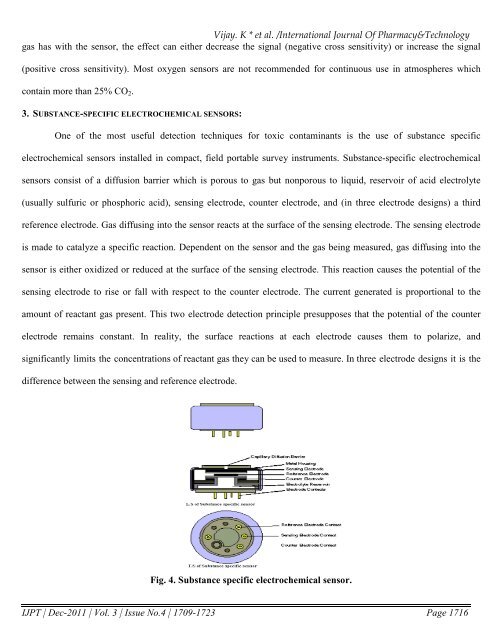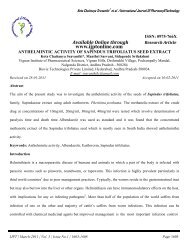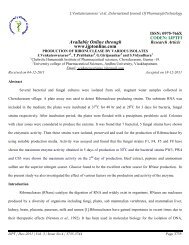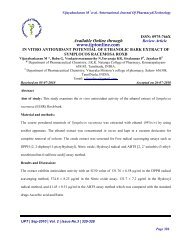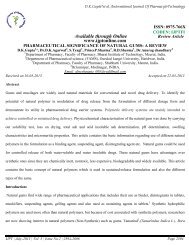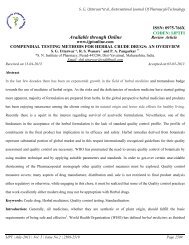ISSN: 0975-766X CODEN: IJPTFI Available through Online Review ...
ISSN: 0975-766X CODEN: IJPTFI Available through Online Review ...
ISSN: 0975-766X CODEN: IJPTFI Available through Online Review ...
- No tags were found...
Create successful ePaper yourself
Turn your PDF publications into a flip-book with our unique Google optimized e-Paper software.
Vijay. K * et al. /International Journal Of Pharmacy&Technologygas has with the sensor, the effect can either decrease the signal (negative cross sensitivity) or increase the signal(positive cross sensitivity). Most oxygen sensors are not recommended for continuous use in atmospheres whichcontain more than 25% CO 2 .3. SUBSTANCE-SPECIFIC ELECTROCHEMICAL SENSORS:One of the most useful detection techniques for toxic contaminants is the use of substance specificelectrochemical sensors installed in compact, field portable survey instruments. Substance-specific electrochemicalsensors consist of a diffusion barrier which is porous to gas but nonporous to liquid, reservoir of acid electrolyte(usually sulfuric or phosphoric acid), sensing electrode, counter electrode, and (in three electrode designs) a thirdreference electrode. Gas diffusing into the sensor reacts at the surface of the sensing electrode. The sensing electrodeis made to catalyze a specific reaction. Dependent on the sensor and the gas being measured, gas diffusing into thesensor is either oxidized or reduced at the surface of the sensing electrode. This reaction causes the potential of thesensing electrode to rise or fall with respect to the counter electrode. The current generated is proportional to theamount of reactant gas present. This two electrode detection principle presupposes that the potential of the counterelectrode remains constant. In reality, the surface reactions at each electrode causes them to polarize, andsignificantly limits the concentrations of reactant gas they can be used to measure. In three electrode designs it is thedifference between the sensing and reference electrode.Fig. 4. Substance specific electrochemical sensor.IJPT | Dec-2011 | Vol. 3 | Issue No.4 | 1709-1723 Page 1716


